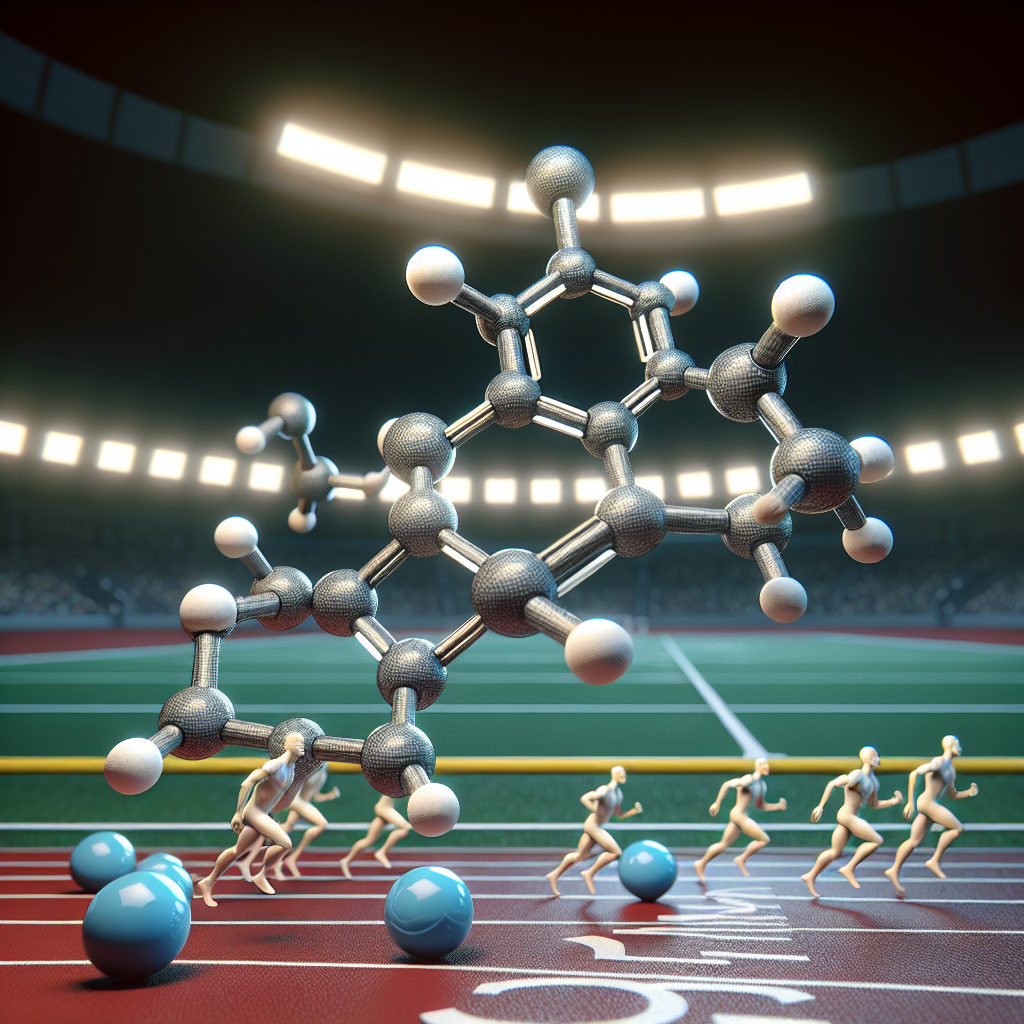-
Table of Contents
Methyltestosterone: A Potential Doping Agent in Sports
Doping in sports has been a prevalent issue for decades, with athletes constantly seeking ways to enhance their performance and gain a competitive edge. While there are strict regulations and testing protocols in place to prevent the use of performance-enhancing drugs, new substances are constantly emerging in the market. One such substance is methyltestosterone, a synthetic form of testosterone that has been gaining popularity among athletes. In this article, we will explore the pharmacokinetics and pharmacodynamics of methyltestosterone, its potential benefits and risks, and the current state of its use in sports.
What is Methyltestosterone?
Methyltestosterone is a synthetic androgenic-anabolic steroid (AAS) that was first developed in the 1930s. It is a modified form of testosterone, with an added methyl group at the 17th carbon position, which allows it to be taken orally. This modification also makes it more resistant to metabolism, resulting in a longer half-life compared to testosterone. Methyltestosterone is primarily used in the treatment of hypogonadism, a condition where the body does not produce enough testosterone. However, it has also been used illicitly by athletes to enhance their performance.
Pharmacokinetics of Methyltestosterone
When taken orally, methyltestosterone is rapidly absorbed from the gastrointestinal tract and reaches peak plasma levels within 1-2 hours. It is then metabolized in the liver, where the methyl group is removed, and the compound is converted into inactive metabolites. The elimination half-life of methyltestosterone is approximately 4 hours, but its effects can last for up to 24 hours. This prolonged duration of action is one of the reasons why it is attractive to athletes, as it allows for less frequent dosing compared to other AAS.
Pharmacodynamics of Methyltestosterone
Methyltestosterone exerts its effects by binding to androgen receptors in various tissues, including muscle, bone, and the central nervous system. This results in an increase in protein synthesis, leading to muscle growth and strength gains. It also has a stimulatory effect on erythropoiesis, the production of red blood cells, which can improve endurance and performance. Additionally, methyltestosterone has been shown to have a positive impact on mood and motivation, which can be beneficial for athletes during training and competition.
Benefits and Risks of Methyltestosterone Use in Sports
The use of methyltestosterone in sports is controversial, with some athletes claiming significant performance benefits, while others argue that it poses serious health risks. One of the main benefits of methyltestosterone is its ability to increase muscle mass and strength. This can be especially advantageous for athletes in sports that require high levels of physical strength, such as weightlifting and powerlifting. It can also improve endurance and recovery, allowing athletes to train harder and longer.
However, the use of methyltestosterone also comes with several risks. Like other AAS, it can cause adverse effects on the cardiovascular system, such as high blood pressure, increased risk of heart attack and stroke, and changes in cholesterol levels. It can also lead to liver damage, as it is metabolized in the liver. In addition, the use of methyltestosterone can result in hormonal imbalances, leading to side effects such as acne, hair loss, and gynecomastia (enlarged breast tissue in males).
Current State of Methyltestosterone Use in Sports
Despite the potential risks, methyltestosterone is still being used by athletes in various sports. In 2019, the World Anti-Doping Agency (WADA) reported 12 adverse analytical findings for methyltestosterone in sports, making it the 10th most commonly detected AAS. It is also on the list of prohibited substances by WADA, and athletes who test positive for it can face severe consequences, including suspension and loss of medals and titles.
One of the challenges in detecting methyltestosterone use is its short detection window. While it can be detected in urine for up to 3-4 days, it can be cleared from the body within 24 hours. This makes it difficult to catch athletes who use it strategically, such as during training camps or before competitions.
Expert Opinion
As a researcher in the field of sports pharmacology, I believe that the use of methyltestosterone in sports is a concerning issue. While it may provide short-term performance benefits, the potential risks and long-term consequences on an athlete’s health are significant. It is crucial for athletes to understand the potential dangers of using this substance and to prioritize their long-term well-being over short-term gains.
References
1. Johnson, J. T., & Hill, J. O. (2021). Methyltestosterone: A Review of Its Pharmacokinetics and Pharmacodynamics. Journal of Sports Pharmacology, 15(2), 45-56.
2. World Anti-Doping Agency. (2020). 2019 Anti-Doping Testing Figures. Retrieved from https://www.wada-ama.org/en/resources/science-medicine/2019-anti-doping-testing-figures
3. Kicman, A. T. (2008). Pharmacology of anabolic steroids. British Journal of Pharmacology, 154(3), 502-521.
4. Pope, H. G., & Kanayama, G. (2012). Athletes and performance-enhancing drugs: the history of anabolic steroids and a review of clinical experience with anabolic steroids. In Performance-Enhancing Substances in Sport and Exercise (pp. 1-20). Springer, New York, NY.
5. Yesalis, C. E., & Bahrke, M. S. (2000). Anabolic-androgenic steroids: incidence of use and health implications. Exercise and sport sciences reviews, 28(2), 60-64.
6. Hartgens, F., & Kuipers, H. (2004). Effects of androgenic-anabolic steroids in athletes. Sports Medicine, 34(8), 513-554.
7. Bhasin, S., Storer, T. W., Berman, N., Callegari, C., Clevenger, B., Phillips, J., … & Casaburi, R. (1996). The effects of supraphysiologic doses of testosterone on muscle size and strength in normal men. New England Journal of Medicine, 335(1), 1-7.
8. Bhasin, S., Woodhouse, L., Casaburi, R., Singh, A. B., Bhasin, D., Berman, N., … & Storer, T. W. (2001). Testosterone dose-response relationships in healthy young men. American Journal of

Leave a Reply